One of the displays in The Cahuilla Continuum exhibit in the Riverside Metropolitan Museums shows some of the material culture associated with traditional Cahuilla daily life.
The Cahuilla homeland in California was bounded on the north by the San Bernardino Mountains; on the south by the northern Borrego Desert; on the east by the Colorado Desert; on the west by the present-day city of Riverside. Traditionally, the people lived in small villages of 100 to 200 people. In his entry on the Cahuilla in the Handbook of North American Indians, Lowell Bean reports:
“Villages were situated in canyons or on alluvial fans near adequate sources of water and other food materials, where a degree of natural defense was afforded from strong prevailing winds.”
Each family would live in a kísh, a circular brush shelter with a scooped out floor. A typical kísh would be about fifteen feet in diameter and about six feet in height. It was made with a frame of bent willow poles which were then thatched with palm leaves and arrow weed.
In general, California Indians have been classified as hunters and gatherers, meaning that they tended to obtain food from hunting and from gathering wild plants. Often evidence of agriculture—the deliberate planting and harvesting of foods—has often been overlooked by non-Indian researchers. Lowell Bean reports:
“Proto-agricultural techniques existed among the Cahuilla. Corn, beans, squashes, and melons of the types used by neighboring Colorado River tribes were most commonly raised.”
Among some of the California desert tribes, such as the Cahuilla, the mesquite tree was an important source of plant food. In the early summer, the mesquite blossoms would be roasted, formed into balls, and then stored for later consumption. Later in the year, the mesquite beans would be harvested. The mesquite beans were stored until needed and then processed using a milling stone. With regard to gathering the mesquite, Jeannine Gendar and Sadie Cash Margolin, in an article in News from Native California, write:
“Everyone picked pods off the ground, but the children, being able to crawl around in the branches more easily than adults, would pick the choice pods from the center of the plant.”
Other plants gathered by the Cahuilla include agave, yucca, wild onion, barrel cactus, tuna cactus, goosefoot, catclaw, ocotillo, chia, thimbleberry, wild raspberry, wild blackberry, and chokecherry.
Preparing seeds and nuts often involved grinding them into flour with a mano and metate or a stone pestle and mortar.
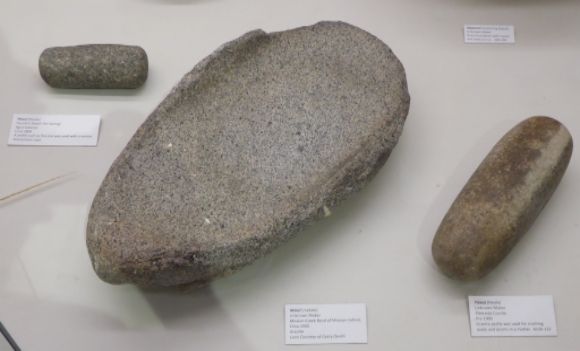 The large flat stone shown above is a metate (málal) made about 1900. The small pestle (páwul), which was made about 1800, would have been used with a mortar. The larger pestle was made prior to 1900.
The large flat stone shown above is a metate (málal) made about 1900. The small pestle (páwul), which was made about 1800, would have been used with a mortar. The larger pestle was made prior to 1900. 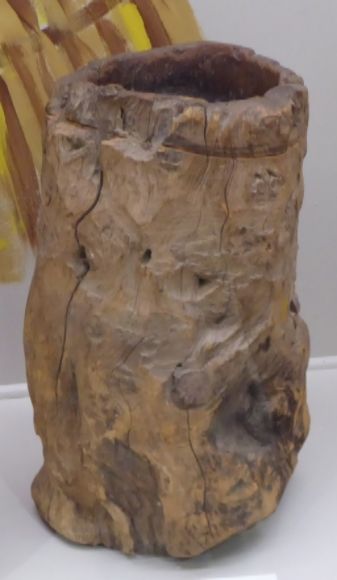 Shown above is a mortar (qáwvvaxal) made about 1900. Mortars made from cottonwood, like this one, were used for pounding dried mesquite.
Shown above is a mortar (qáwvvaxal) made about 1900. Mortars made from cottonwood, like this one, were used for pounding dried mesquite. 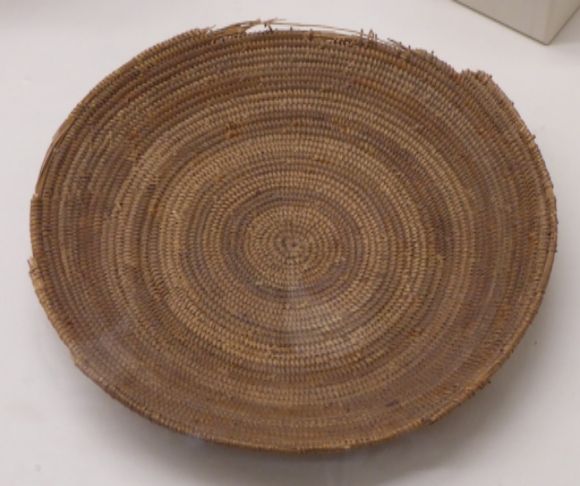 Shown above is a sifting tray (chipatmal) made in the nineteenth century by an unknown maker. Flat work baskets like this one were used for winnowing or parching seeds and nuts.
Shown above is a sifting tray (chipatmal) made in the nineteenth century by an unknown maker. Flat work baskets like this one were used for winnowing or parching seeds and nuts.  Shown above is a gathering basket (sáqwaval) made by Manuella Powett Costo in the late nineteenth century.
Shown above is a gathering basket (sáqwaval) made by Manuella Powett Costo in the late nineteenth century. 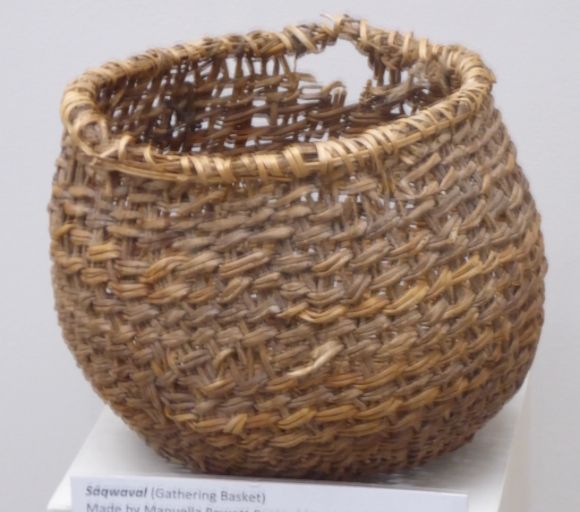 Shown above is a gathering basket (sáqwaval) made by Manuella Powett Costo in the 1880s.
Shown above is a gathering basket (sáqwaval) made by Manuella Powett Costo in the 1880s. 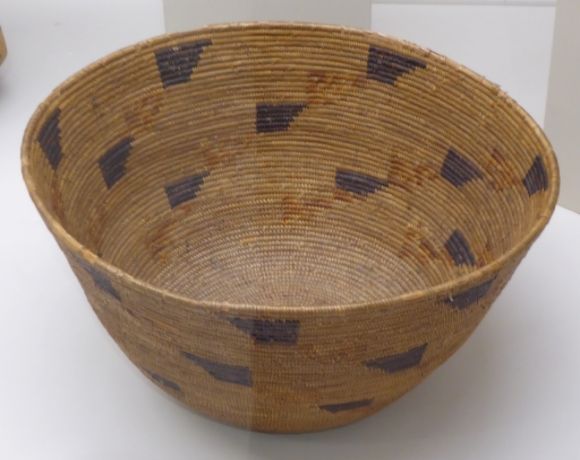 Shown above is a gathering basket (sáqwaval) by an unknown maker. This basket has a grass foundation with sumac and dyed juncus.
Shown above is a gathering basket (sáqwaval) by an unknown maker. This basket has a grass foundation with sumac and dyed juncus. 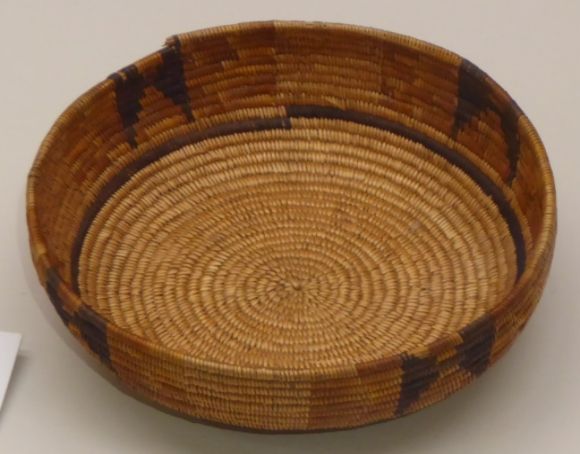 Shown above is an unfinished basket from the early twentieth century.
Shown above is an unfinished basket from the early twentieth century. 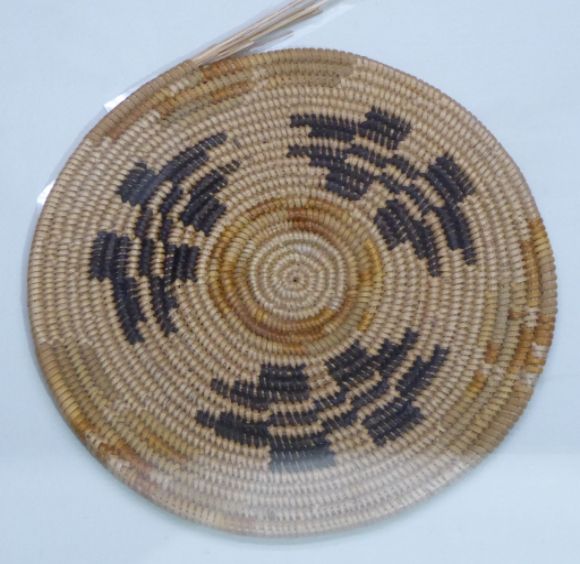 Shown above is a basket start from about 1900-1910. This is simply the beginning, or start, of a basket.
Shown above is a basket start from about 1900-1910. This is simply the beginning, or start, of a basket. 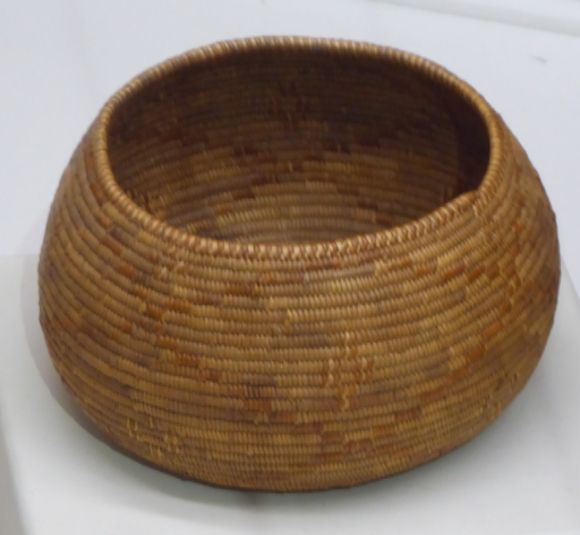 Shown above is a basket bowl (kávamal) made by Terressa Romero from the Soboba Reservation between 1895 and 1905.
Shown above is a basket bowl (kávamal) made by Terressa Romero from the Soboba Reservation between 1895 and 1905. 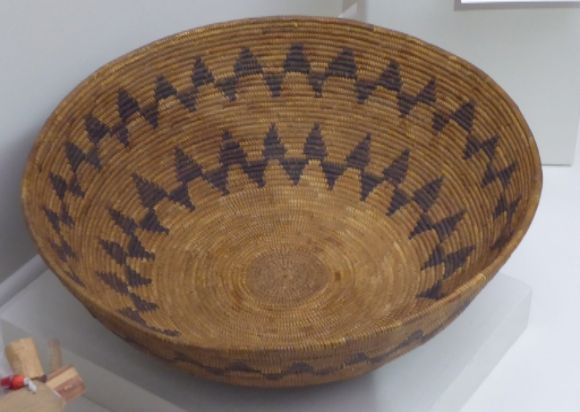 Shown above is a late nineteenth century cooking basket.
Shown above is a late nineteenth century cooking basket.
According to the display:
“Acorn meal and other foods were cooked in baskets. Heated rocks were dropped into the food and stirred until the food was cooked.”
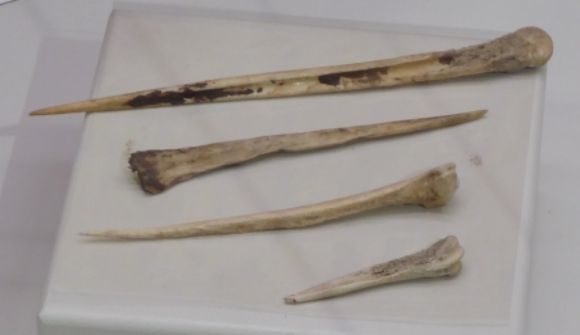 Shown above are some bone awls from about 1900. These were used in making baskets as well as for punching holes in skins. Awls were often made from deer bone.
Shown above are some bone awls from about 1900. These were used in making baskets as well as for punching holes in skins. Awls were often made from deer bone.
Pottery
Cahuilla pottery was probably borrowed from the Colorado River Indians to the east of the Cahuilla. Regarding Cahuilla pottery, Lowell Bean and Harry Lawton, in their book The Cahuilla Indians of Southern California, write:
“While pottery was relatively late in developing among the Cahuilla, it also served as a means of artistic expression. A strong similarity exists between Cahuilla pottery designs, body designs, and petroglyph designs.”
 Shown above is a cooking pot from the early twentieth century.
Shown above is a cooking pot from the early twentieth century. 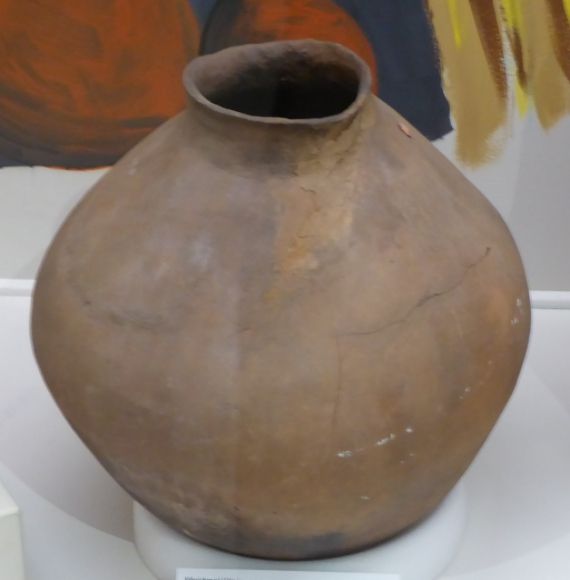 Shown above is an olla (kávishmal) from the early twentieth century.
Shown above is an olla (kávishmal) from the early twentieth century.


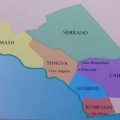
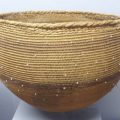
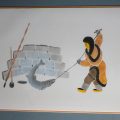
Leave a Reply